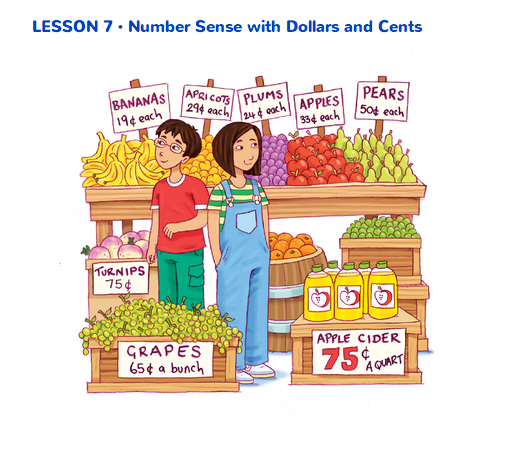Number Sense with Dollars and Cents
Est. Class Sessions: 1Developing the Lesson
Skip Count by Coins. Begin the lesson by skip counting on the class number line by nickels (5¢ , 10¢ , 15¢ …$1.25, $1.30) and dimes (10¢ , 20¢ , 30¢ … $1.20, $1.30). As one student points to the class number line, the rest can count using their desk number lines. As they skip count for each coin, write the prices on the board or chart paper so that students can use the notation correctly as they solve problems.
Repeat the activity for quarters using the number line to $1.25 (25¢ , 50¢ , 75¢ , $1.00, $1.25) then continue on to $3.00. Finally, skip count by 50¢ to $5.00.
Display the first Number Sense with Dollars and Cents page from the Student Guide so that the items and their prices can be seen.
Use Benchmarks to Estimate. Ask students to read Question 1 and solve it using Sam's counting method as described in the problem.
Then ask:
Students work in pairs to discuss Questions 2–4. Encourage them to answer the questions without paper and pencil. After several minutes, ask students to report their solutions and strategies.
The first four questions help prepare students to use benchmarks (such as 25¢ and 50¢) when estimating answers for the next set of problems, Questions 5–11, and when solving similar problems throughout the year. Recommendations such as "think of quarters," "use convenient numbers like 25¢ or 50¢," or "skip count by quarters using the number line" may be helpful.
Invent Strategies. Students work in pairs or groups to develop their own strategies as they solve Questions 5–11. Remind students that they need not find the exact total cost of the fruit in order to solve the problems. Rather, they need to find an approximate cost so that they can determine if the purchase can be made.













